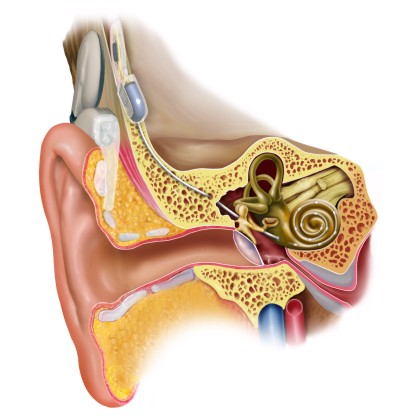Cochlear Implants aim to restore hearing by direct electrical stimulation of the spiral ganglion, the part of the cochlea where the cell bodies of the auditory nerve fibres sit. This picture, kindly provided by MedEl, shows a typical modern cochlear implant. Contemporary implants consist of a receiver unit implanted under the scalp, from which a stimulating array electrode is run through the temporal bone and inserted into the scala tympani of the cochlea. Contemproary implants have in the order of 20+ contacts which deliver electrical stimulation along the tonotopic array.

Cochlear implants often represent speech formants quite well and enable implantees to have telephone conversations unaided. However, contemporary implants are unable to deliver sufficient temporal and spectral fine structure information to allow implantees to appreciate pitch and musical melody, or to localize sound sources accurately. These limitations make it hard for implantees to follow conversations in environments with high background noise. These shortcomings notwithstanding, cochlear implants are often remarkably effective in improving the quality of life of the severely hearing impaired.
